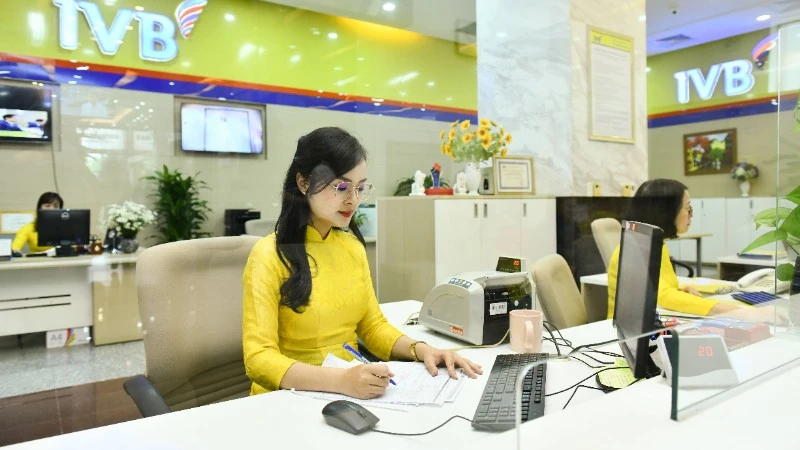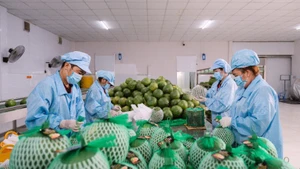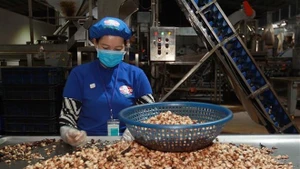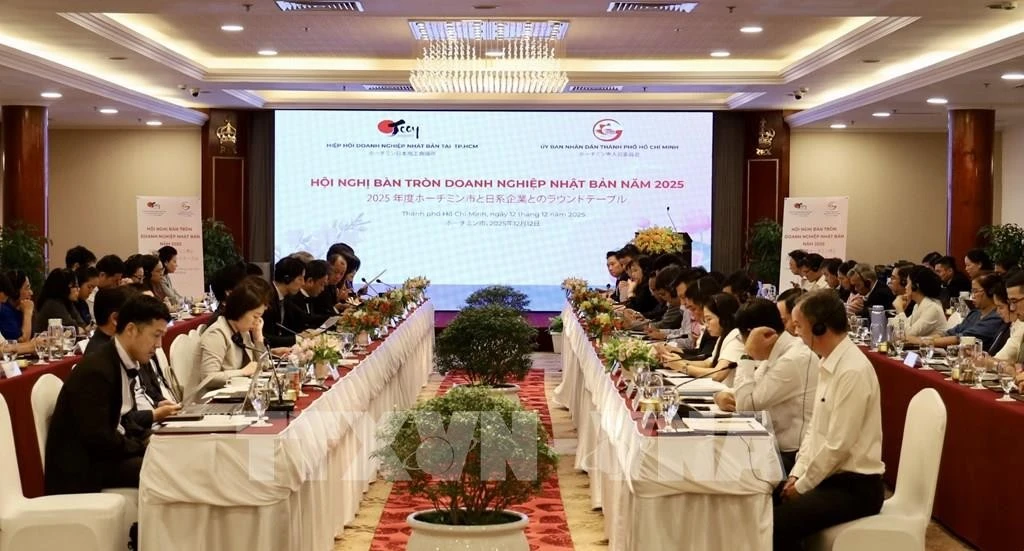According to economic experts, since early 2025, the global political and economic landscape has remained unpredictable—rising market concerns over US tariff policies and risks of a global trade war, geopolitical conflicts, commodity price shocks, and lingering inflationary pressures despite a cooling trend. These factors have created complex volatility in global financial markets, exerting pressure on Viet Nam’s monetary policy, exchange rate, and interest rate management, while posing challenges to achieving the national growth target of over 8% in 2025.
Credit as a driving force
Amid global and regional instability, the State Bank of Viet Nam (SBV) has demonstrated proactive and flexible monetary policy management, closely coordinating with fiscal and other macroeconomic policies. Thanks to its prudent direction, Viet Nam has achieved notable results.
Inflation has been effectively contained, aligning with the target, with the eight-month average rate standing at 3.25% (core inflation at 3.19%, lower than the headline rate). These figures underscore the critical role of monetary policy in maintaining macroeconomic stability and establishing a solid foundation for GDP growth.
Significantly, credit management has been among the SBV’s top priorities in balancing capital for growth. Since early 2025, the central bank has maintained low policy interest rates to guide the market toward lower lending rates, thereby supporting businesses and individuals.
It has regularly directed credit institutions to cut operating costs and enhance technology adoption to further reduce lending rates. Consequently, borrowing costs have continued to decline, easing financial burdens on customers.
In addition, the SBV has taken proactive steps to facilitate capital supply for credit institutions. Since late 2024, the entire 2025 credit growth quota was publicly announced in advance. Notably, on July 31, in light of controlled inflation and favorable economic conditions, the SBV announced an additional increase in credit growth limits for qualified banks—without requiring formal requests from them. This move reflected the regulator’s flexibility and readiness to “open the credit valve” when conditions allowed, ensuring timely capital support for economic expansion.
According to Ha Thu Giang, Director General of the SBV’s Department of Credit for Economic Sectors, as of September 29, credit to the economy had increased by 13.37% compared with the end of 2024—a higher rate than the same period last year, maintaining a steady upward trend over recent months.
Along with the expansion in credit volume, the quality of capital flows has been given special attention. The SBV has directed credit institutions to ensure safe and efficient credit growth, channeling loans toward production, business activities, priority sectors, and key economic growth drivers in line with Government directives. Data show that credit capital is being steered in the right direction: about 78% of total outstanding loans in the economy serve production and business purposes.
Priority sectors account for a significant share, including agriculture (22.76%) and small and medium-sized enterprises (19.04%). Several leading industries have seen strong growth in credit access, such as supporting industries (up 23.14%) and high-tech enterprises (up 25.02%). Specialised credit programmes have also been actively implemented. The lending programme for agriculture, forestry, and fisheries has reached a cumulative disbursement of nearly 106 trillion VND, with plans to expand its scale to 185 trillion VND (the fourth adjustment).
Similarly, the social housing credit programme under Resolution No.33/NQ-CP, and preferential lending for young buyers under 35 years old purchasing social housing, have produced positive results, with disbursements totaling around 4.7 trillion VND —a 66.2% increase compared with the end of 2024.

Ensuring capital balance in tandem with system safety
According to Deputy Governor of SBV Pham Thanh Ha, alongside capital injection, the SBV has focused on stabilising and strengthening the resilience of the credit institution system, ensuring that capital balance goes hand in hand with system safety. The restructuring of credit institutions continues to be accelerated to maintain stability and safeguard the legitimate interests of depositors. Bad debts are being addressed and tightly controlled, especially in the context of ongoing difficulties in production and business activities. Meanwhile, the legal framework for monetary and banking operations continues to be refined.
The National Assembly’s adoption of the amended Law on Credit Institutions, which was effective October 15, 2025, marks an important milestone that will help the banking system operate more safely, align with practical realities, and meet international standards.
However, despite many positive indicators, economic experts and domestic and international financial analysts have issued various warnings. Overall, the SBV and the banking system are operating under dual pressure: they must both inject capital to support the Government’s 2025 growth targets, and at the same time maintain macroeconomic balance, ensure financial safety, control inflation, and safeguard macroeconomic stability.
Achieving 13.37% credit growth as of September 29 is an encouraging sign, creating room to reach or even surpass the 16% target for the year. Yet, the success of 2025 will not be measured solely by the expansion of credit, but by the quality of capital flows—whether funds are truly directed toward production, business, new growth drivers, and high technology, or instead drifting into high-risk “dark zones” such as real estate and securities. Thus, risk management, banking restructuring, and legal framework improvement must remain top priorities.
Fully aware of these challenges, Deputy Governor Pham Thanh Ha affirmed that in the final months of the year, the SBV will continue to implement proactive, flexible, and synchronised monetary policies, in close coordination with fiscal policy. The top priorities remain promoting economic growth while ensuring macroeconomic stability and controlling inflation.
The banking sector is committed to ensuring adequate capital supply, unblocking safe and efficient credit flows toward key growth drivers, and continuing to implement solutions to ease capital difficulties for enterprises and citizens—contributing to the successful fulfillment of the 2025 growth objectives.
In the remaining months of the year, the SBV will continue to implement a proactive, flexible, and coordinated monetary policy, in close alignment with fiscal policy. The top priorities remain promoting economic growth while maintaining macroeconomic stability and controlling inflation.
Deputy Governor Pham Thanh Ha
In addition to the capital boost from credit institutions, experts believe that to meet the growing capital demand of the economy, it is essential to continue strengthening both the stock and corporate bond markets. Meanwhile, analysts at VDSC Research have offered noteworthy insights regarding foreign direct investment (FDI) flows.
According to their analysis, as Viet Nam is poised to join the FTSE Russell’s “Emerging Markets” group in 2026, inflows from ETFs and foreign investment funds are expected to rise significantly. However, opportunity comes with pressure: if the investment environment, governance, and infrastructure are not sufficiently attractive, these capital flows could quickly shift elsewhere.
















